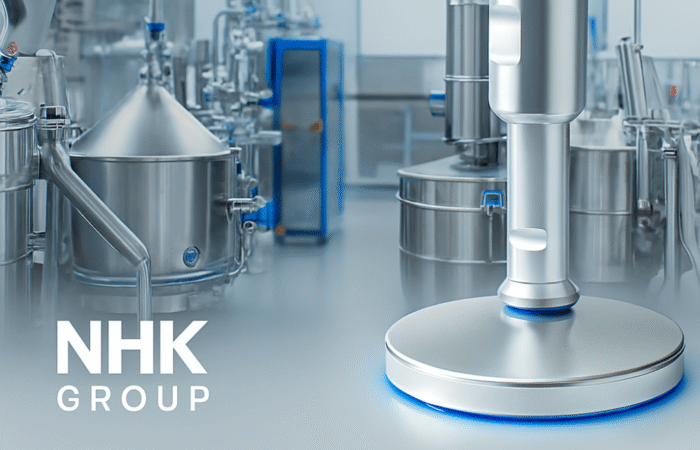
Bakery and Confectionery Production
In the bakery and confectionery industries, maintaining the highest standards of hygiene is critical. The production and processing of bread, cakes, pastries, chocolates, candies, and biscuits require equipment that not only ensures efficiency and precision but also meets stringent sanitation regulations. To meet these requirements, hygienic machinery components and sanitary conveyor parts play an essential role. This article explores the significance of these components, focusing on their applications and benefits in bakery and confectionery production. In the bakery and confectionery sectors, machinery often comes into direct contact with ingredients like dough, chocolate, and icing. Any contamination can compromise product quality, leading to costly recalls and damage to a brand’s reputation. For this reason, hygienic components — designed specifically to eliminate areas where bacteria can accumulate — are fundamental. These components are built using materials such as stainless steel, which is resistant to corrosion, easy to clean, and approved for food contact by various health and safety standards. Additionally, their design adheres to hygienic principles, featuring smooth surfaces and rounded edges to prevent food residues from building up. Mixers and dough sheeters are used in the initial stages of production for mixing ingredients and preparing dough. Hygienic components, such as IP67-rated bearing units and sanitary seals, are essential in these machines. They prevent moisture and fine particles from entering critical mechanical areas, thus avoiding contamination and ensuring smooth operation. The conveyor systems used in this phase, equipped with food-safe modular belts and hygienic leveling feet, facilitate the seamless transfer of heavy dough batches. These conveyors must be easy to disassemble for regular cleaning and inspection, making sanitary design crucial. Baking is the core process in bakery production, involving high temperatures and precise control. Hygienic components such as high-temperature bearings and heat-resistant seals ensure that ovens operate reliably without compromising product safety. Sanitary conveyor parts, such as stainless steel chains and food-grade rollers, are often used in transferring products through continuous baking lines. Moreover, ovens and related equipment must be designed to minimize the risk of cross-contamination. The use of hygienic machinery components that can withstand high temperatures and harsh cleaning processes ensures that production remains sanitary and efficient. Enrobing machines, used for coating products like chocolates and candies, require components that handle sticky substances and liquids. This process demands conveyor systems equipped with non-stick and easy-to-clean modular belts. Additionally, waterproof bearing units and corrosion-resistant components prevent liquid ingress, ensuring that no residues are trapped in the equipment. By using sanitary conveyor parts, manufacturers can maintain a clean working environment, reducing the risk of bacterial growth and improving product shelf life. Packaging is a crucial stage in the production process, where products are sealed and prepared for distribution. Hygienic components such as IP69K-rated bearings, food-safe lubricants, and stainless steel housings ensure that packaging lines remain free from contamination. These components are built to withstand frequent washdowns and the harsh chemicals used in cleaning processes. Sanitary conveyor parts, such as hygienic drive systems and modular castors, enable smooth product handling during packaging. This is especially important for delicate products like biscuits and pastries, which require gentle handling to avoid damage. Furthermore, quick-release mechanisms and hygienic supports allow for easy cleaning and reduce downtime, enhancing overall productivity. When selecting components for bakery and confectionery production, adhering to hygienic design principles is crucial. The European Hygienic Engineering and Design Group (EHEDG) and other regulatory bodies provide guidelines for designing food-safe equipment. Some key principles include: Using hygienic components reduces the risk of contamination, ensuring that products meet food safety standards. This is particularly important in confectionery, where sticky ingredients like caramel and chocolate can easily harbor bacteria. Hygienic components are built to withstand aggressive cleaning chemicals and extreme operating conditions, extending the lifespan of machinery and reducing the need for frequent replacements. Sanitary conveyor parts and hygienic machinery components are designed for easy maintenance and quick cleaning, minimizing downtime and increasing production efficiency. This is crucial in high-output environments like bakery and confectionery production. By using components that adhere to EHEDG, FDA, and other international standards, manufacturers can ensure compliance with food safety regulations. This reduces the risk of non-compliance penalties and helps maintain a company’s reputation. Hygienic machinery components and sanitary conveyor parts are indispensable in the bakery and confectionery industries. From mixers and dough sheeters to enrobing machines and packaging lines, these components ensure that production runs smoothly, safely, and efficiently. By choosing components that adhere to hygienic design principles and withstand the demands of food processing, manufacturers can protect their products and maintain the highest standards of quality. Investing in hygienic and sanitary components is not just a matter of regulatory compliance but a commitment to product safety and operational excellence. Whether producing bread, pastries, chocolates, or candies, selecting the right components is essential for ensuring that every product is as safe and delicious as intended.Hygienic Machinery Components and Sanitary Conveyor Parts in Bakery and Confectionery Production
The Importance of Hygienic Components in Food Processing
Applications in Bakery and Confectionery Production
1. Mixers and Dough Sheeters
2. Ovens and Baking Equipment
3. Enrobing Machines for Confectionery
4. Packaging Lines for Bakery and Confectionery
Design Principles for Hygienic Components and Conveyor Parts
Benefits of Hygienic Machinery Components and Sanitary Conveyor Parts
1. Improved Product Safety
2. Extended Equipment Life
3. Enhanced Efficiency and Productivity
4. Compliance with Food Safety Regulations
Hygienic Machinery Components and Sanitary Conveyor Parts in Bakery and Confectionery Production


Contact













